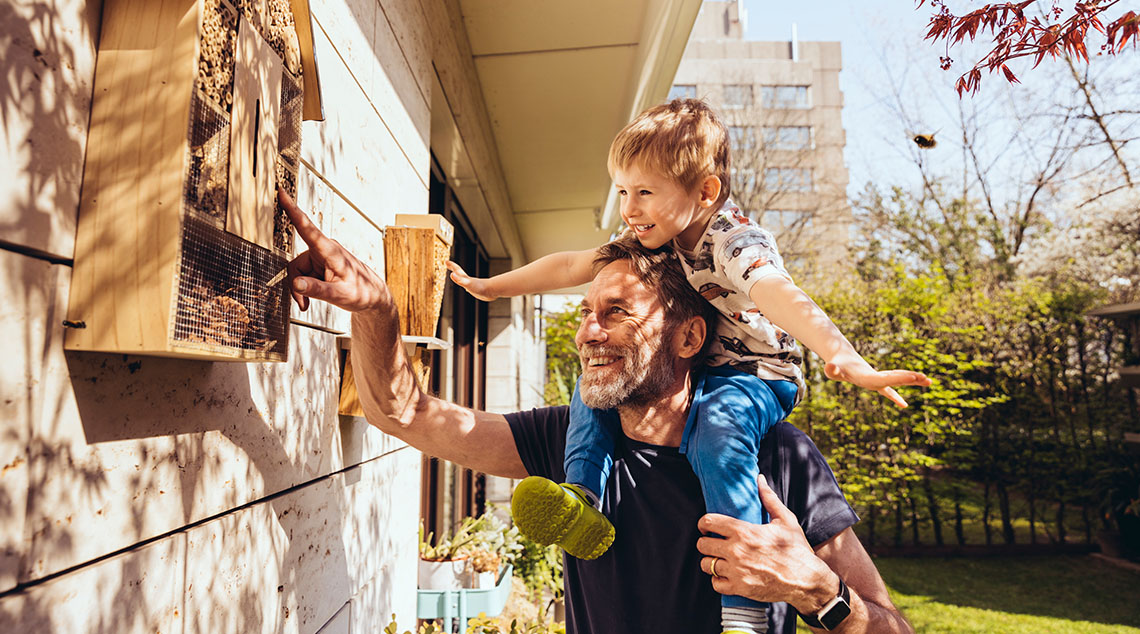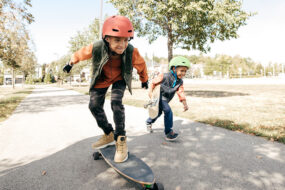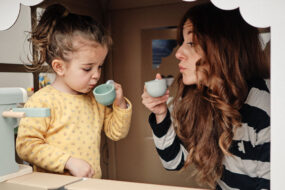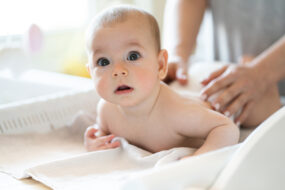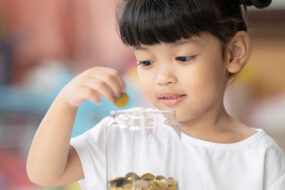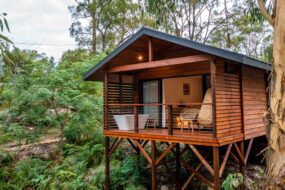Fun and practical activities for climate warrior kids
Encouraging children to get hands on with environmentally sustainable activities is not only good for the planet, it is also good for them.
If you’ve heard your children talking or worrying about climate change, you are not alone.
Surveys show it is on the radar for most kids in Australia — and for good reason.
It is predicted children born in 2020 will experience two to seven times more extreme weather events compared with people born in 1960, under current climate policy pledges.
One way to help is by encouraging kids to take action.
Why kids should be engaged in climate action
“Encouraging children to engage in environmentally sustainable activities not only supports their wellbeing but also paves the way for a better future,” Karen Walsh from Junior Landcare, a program teaching kids how to care for the environment, says.
Clean Up Australia chair Pip Kiernan agrees encouraging practical action is a good idea.
“Kids tend to be bombarded with negative messaging about the environment, so introducing them to practical things they can do is a proven way of helping to overcome that fear,” Pip says.
“It helps them feel like change is possible and that their actions and choices can make a real difference.
“Children are our future and that mindset can help set them up for life.”
In celebration of Earth Day on 22 April 2024, here are some fun, impactful, environmentally sustainable activities for kids.
Fun activities for climate warrior kids
Make your own compost
“Almost half of what goes into our general waste bins is food and, as well as being a wasted resource, when food goes into landfill it gives off methane,” Pip says.
That’s a greenhouse gas that is 25 times more potent than the carbon pollution from a car’s exhaust.
Composting helps kids be more mindful about not wasting food, and helps them understand that if it is not going to be eaten, it should go back into the earth to provide nutrients for the soil, Pip says.
Karen adds it also teaches children to value compost as an important part of soil.
“And it’s healthy soil that sustains us and other living things who share the earth with us,” Karen says.
Creating compost is an activity kids can learn through Junior Landcare.
Learn to recycle
Pip notes it is often children who really want to recycle at home.
“But it can be confusing knowing how to do it properly,” she says.
Two tools that can help are Greenius (an online learning platform including interactive games and quizzes) and an app called Recycle Mate.
“With Recycle Mate, your kids can simply hover a phone over any item and it’ll tell them which of your household bins it goes into, based on your location and your council’s recycling waste collection,” Pip says.
The app also shares whether there is an alternative way to recycle an item, such as at a local container deposit scheme.
“Recycling this way is really fun and rewarding for kids,” Pip says.
“Not only is it an effective way of getting uncontaminated and clean recycling back into recycling streams, children can also choose to donate the money they earn to a local charity or environmental group.”
Go op shopping together
“Shopping at thrift or op shops gives your kids the opportunity to take part in the second-hand or pre-loved market, and gives you the chance to demonstrate why that’s important,” Pip says.
“It’s an action that helps other charities as well as the environment because it’s giving things a new life and keeping them out of landfill.
“Plus, you can find some absolute treasure and kids really get into it.”
Get practical with sustainability
These sustainability projects will get the kids up close and personal with beneficial critters in their own backyard.
Make a bee hotel
“This ‘air bee and bee’ DIY project teaches kids about the vital role bees play in ecosystems and how to create safe environments for them by mimicking their natural habitat,” Karen says.
“You can make an insect or bee hotel from recycled cans, inserting hollowed-out stems and then placing them around the garden.”
Junior Landcare has detailed instructions on how to build a bee hotel.
Build a worm farm
“This promises wiggly fun while helping children understand the connection between various living things, including the crawly ones, and appreciate their roles,” Karen says.
“For example, if you encourage your kids to look beneath the surface, they’ll discover the earthworm’s remarkable ability to recycle waste and create natural fertiliser.”
You can find instructions for this activity on the Junior Landcare website, but the main things you need are a polystyrene box, composting earthworms, a garden hose, garden soil, straw mulch, hessian, flywire, small rocks, and food scraps.
“After creating it, your junior eco warrior can maintain the farm every couple of weeks by adding food scraps,’’ Karen says.
“This not only gives them a sense of responsibility, it also teaches them about reducing landfill waste.”
Set up ‘water for wildlife’ stations in your garden
“This not only supports wildlife in your backyard throughout the year, it (also) encourages children to take actions that improve outcomes for wildlife and recognise the essential role of water for the survival of all living things, including humans,” Karen says.
All you need is a shallow container such as a used takeaway container.
“Then take a walk together in your backyard or around a local park to collect rocks and sticks to place inside — it’s these natural elements that provide wildlife with access to the water,” she suggests.
“And don’t forget to fill it up with fresh water regularly.”
More on sustainable living:
- 25 effortless ways to reduce your carbon footprint
- Smart ways to reduce food waste with these easy hacks
- Is ‘greenwashing’ thwarting your eco-efforts?
- Eco-friendly ways to get insects out of your house
Written by Karen Fittall.
